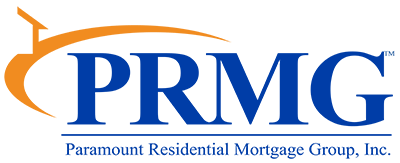DSCR Loans in California: A Friendly Guide for Real Estate Investors
Qualify based on property cash flow—not your tax returns.
| Important: Educational only; not financial, legal, or tax advice. Programs and guidelines may change. Not a commitment to lend. NMLS 1515287. |
| Quick Summary
• DSCR = property income ÷ monthly payment (PITIA). • Many programs don’t require personal tax returns. • Strong DSCR tiers usually start around 1.25; ≥1.00 is often workable with trade‑offs. • 7 practical levers inside to improve your DSCR. |
1) What is DSCR—and why investors use it
DSCR (Debt Service Coverage Ratio) compares a rental’s income to its monthly housing cost. Lenders use it to see if the property’s cash flow comfortably covers the payment. Many DSCR programs focus on the asset’s performance instead of your personal tax returns.
DSCR loans are helpful when:
- Your tax returns are complex or heavy on write‑offs
- You’re scaling to multiple doors or using LLCs
- You want underwriting that prioritizes cash flow over personal income docs
2) How DSCR is calculated (simple formula)
Formula:
DSCR = Net Rental Income ÷ Total Monthly Payment (PITIA)
What counts:
- Net Rental Income often comes from a signed lease or the appraiser’s market rent (Form 1007).
- PITIA = Principal + Interest + Taxes + Insurance + (HOA dues, if any).
Example: market rent supports $3,000/mo and the full payment is $2,400 → DSCR ≈ 1.25. That means ~25% more income than the payment—typically a favorable tier.
3) Typical DSCR tiers (no rate quotes)
- ≥ 1.25 — often considered strong cash flow; may allow better terms
- 1.00–1.24 — commonly acceptable with more conservative terms
- < 1.00 — available with select programs at lower leverage; more restrictive
Guidelines change. We’ll confirm your exact options for the property and lender.
4) What properties and borrowers typically fit
- Property types: 1–4 unit SFRs; many warrantable condos; some non‑warrantables or STRs case‑by‑case
- Occupancy: Investment properties only
- Docs: Lease or 1007 rent schedule, appraisal, assets for down payment/closing/reserves, ID (often no tax returns)
- Credit: Minimum score varies; stronger credit helps
- Entity: Many programs allow LLC or corporation vesting (with personal guaranties)
5) Seven levers to improve your DSCR
- 1. Raise supported rent — realistic lease or STR data when allowed; ensure the 1007 uses the right comps.
- 2. Reduce PITIA — consider allowed interest‑only, longer amortization, or a strategic buydown.
- 3. Adjust leverage — a slightly larger down payment can push you over a key tier.
- 4. Trim expenses — shop insurance, verify taxes, confirm accurate HOA dues.
- 5. Pick better sub‑markets — target stronger rent‑to‑price ratios or ADU potential.
- 6. Avoid payment stacking — second liens add to PITIA and can drag DSCR down.
- 7. Stabilize income — longer leases or documented STR history (when permitted).
6) California reality check (what to verify)
- Local STR rules & permit requirements if you plan nightly/weekly rentals
- Projected taxes & assessments (e.g., Mello‑Roos/CFDs in some communities)
- Insurance availability & cost by county and risk zone
- HOA rules that affect rentals, minimum lease terms, or ADUs
Pro move: Where zoning allows, an ADU can materially lift DSCR—budget time and cost conservatively.
7) Money & timing: reserves, costs, and speed
- Reserves: expect several months of PITIA (varies by LTV, credit, and lender)
- Closing costs: title, escrow, appraisal, and prepaids (taxes/insurance); seller credits may be allowed
- Timing: with a clean file and responsive parties, DSCR loans can move quickly; appraisal is often the pacing item
8) DSCR vs. conventional investment loans
Pros (DSCR): less personal income documentation; scalable; often LLC‑friendly.
Trade‑offs: leverage and prepayment can be more conservative; pricing is risk‑based and varies.
9) Simple step‑by‑step path
- 1. Quick consult — clarify goals, property type, and timeline.
- 2. Scenario run — estimate DSCR with realistic rent and PITIA.
- 3. Pre‑approval — gather assets/ID, run credit, align on structure/vesting.
- 4. Offer & escrow — appraisal, insurance, title/LLC docs.
- 5. Clear to close — review final numbers, sign, and fund.
10) Quick FAQs
Can first‑time investors qualify?
Often yes. Many programs allow first‑time investors with adequate credit, reserves, and a property that meets DSCR requirements.
Can I use short‑term rental income?
Some programs allow STR income via appraiser schedules or documented history; others require long‑term leases. We’ll match your plan to the right program.
Can I close in an LLC?
Frequently yes. Expect personal guaranties and standard entity documents. Vesting requirements vary by lender and state.
Are there prepayment penalties?
Many DSCR loans include a prepayment provision (e.g., step‑downs). We’ll review options so you understand costs vs. your exit strategy.
How many properties can I finance?
Exposure limits vary by lender. DSCR is commonly used to scale portfolios—plan sequencing early.
| Talk with Louay — Your Mortgage Advisor
Want a quick DSCR scenario review for a California property? I’ll outline options and next steps. Call: 619‑954‑3446 • Email: LYousif@prmg.net Educational only; not a commitment to lend. NMLS 1515287. |


Comments open